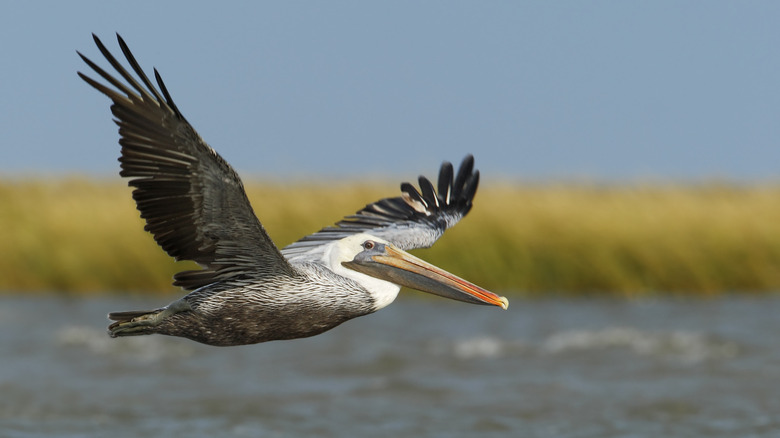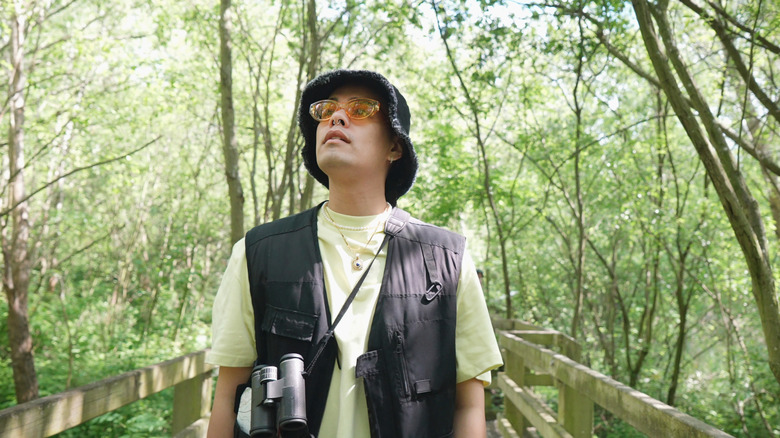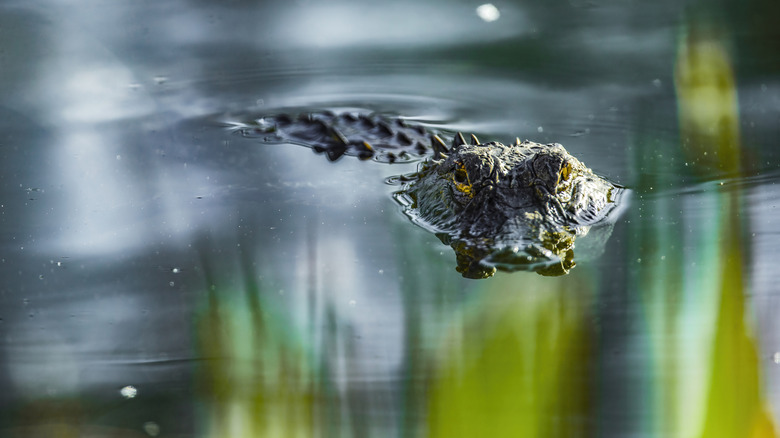Texas' Best Birding Spot Is An Unsung Pristine Destination With Pretty Beaches
Stretching out like an elongated finger across the mouth of Galveston Bay, the Bolivar Peninsula is a popular weekend retreat for those seeking sun, sand, and other joys of the sea. Situated just an hour and a half from Houston — one of the best cities for food lovers in the U.S. — this narrow stretch of land is also home to wildlife, including nesting sea turtles and large numbers of migratory birds.
At the northern end of the Bolivar Peninsula sits High Island, a quiet, unincorporated community that is still well off most travelers' radar. Contrary to the name, the settlement isn't an actual island but rather a rare bit of elevated space — 38 feet above sea level, to be precise — in an otherwise pancake-flat landscape. It is, in fact, the highest point on the Gulf of Mexico between Mobile, Alabama, and the Yucatán Peninsula, and while this bit of trivia does make it special, visitors to High Island mainly come for the area's natural charms.
Blessed with chilled-out, uncrowded beaches, High Island is the perfect spot for some seaside relaxation. What makes it truly stand out, however, are its opportunities for spotting avian wildlife, which puts it on par with some of the best birdwatching destinations in the U.S. High Island is home to four separate Audubon Society sanctuaries, which especially come alive in the spring and fall, when many species stop there to rest during their great migrations.
Experience seaside serenity amongst great flocks of birds
High Island is nestled at the edge of the kind of large wetland and forest that East Texas is famous for. On the other side is a wide, coarse sand beach lapped by the waves of the Gulf of Mexico. The fact that the place is penned in on both sides by natural barriers helps guarantee that High Island retains its unspoiled, wild charms, which also makes it the perfect habitat for both migrating and local birds.
The Houston Audubon Society has recognized High Island's critical role as a migratory bird resting and refueling stop by creating several sanctuaries: Boy Scout Woods, Smith Oaks, S.E., Gast Red Bay, and Eubank Oaks. These four preserves are open daily, year-round, though visitors must purchase an annual patch, which can be bought online or at kiosks during spring migration. Day passes are also available, and admission is free for children under 18, students with a valid school ID, and local residents.
The High Island Reserves feature over 400 documented species of birds, some of which have never been seen in the United States before. These include warblers, tanagers, buntings, cormorants, geese, woodpeckers, hummingbirds, and many more. What is guaranteed is that — especially in the spring — you will be treated to an array of colors and sounds that will both dazzle and give you a deeper respect for the beauty of the natural world.
Sand, trees, swamp, and surf
While plenty of people are drawn to High Island for the birding, it's by no means the only thing to do there. The area is also a great place for light hiking, with several paths that take strollers into the peaceful natural surroundings. All four Audubon sanctuaries feature loop trails that are appropriate for walkers of all levels — including the Boy Scout Woods Sanctuary Trail, which winds through a gorgeous stand of forest — and the beach itself invites you to come and take a long, leisurely stroll.
High Island also has great shore fishing and is a good place for spotting wildlife. In the spring and summer, sea turtles come ashore to nest, and the bayous and swamps surrounding High Island are also home to wetland creatures such as American alligators. If you're lucky, you may also spy coyotes, bobcats, possums, and raccoons. For more outdoor wonder in the Lone Star State, dive into one of its many great state and national parks.


